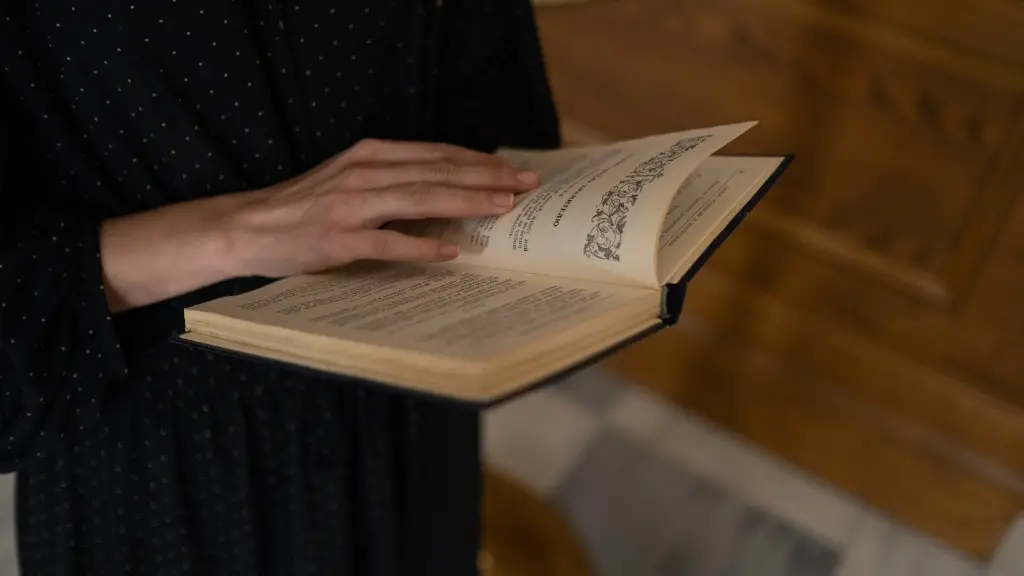Overview
Hagar is an important figure in the Bible, particularly in the Old Testament, who appears as a Hagarite and a matriarch. Her story is significant because it resonates with people of many faiths, her struggles are visible in many lives today and her courage amidst adversity has been a source of inspiration to many throughout the centuries.
In the Bible, Hagar is first mentioned when she is used by Abraham, her master, and Sarah, his wife, as a surrogate mother. Eventually, after giving birth to a son Ishmael, she and her son are banished from Abraham’s home due to Sarah’s jealousy. During her exile, Hagar has a remarkable encounter with an angel during which she is given the promise of her son becoming a great nation.
Hagar is considered a particularly strong female figure in the Bible, she stands up for herself when speaking to Sarah and shows courage and faith as she accepts the divine promise of making Ishmael’s generations great. Her life reflects the symbolism of liberation and is often referenced as an archetype for women of faith.
Although her actual details vary from version to version of the Bible, the central story of Hagar’s life remains clear and is important even today. In this article, we will explore the life story of Hagar, the lessons from her struggles, and different interpretations of the symbolic meaning of her story.
Early Life and Role as Sarah’s Handmaid
Hagar is only mentioned by name throughout the Book of Genesis, in which she is described as an Egyptian slave, taken into Abraham’s service as a concubine. In the Middle Eastern context during the time of Abraham, handmaids were common, used to provide a woman with a child if she was unable to conceive one herself, a practice thought to be reflective of God’s promise to abundance. Hagar was, however, entered into service with the singular purpose of bearing a child to Abraham’s wife.
Sarah had been barren for many years and although she initially saw Hagar merely as her servant, it became clear that Sarah eventually accepted Hagar’s role as a surrogate. When Sarah found herself with child at last, Hagar’s place as a servant shifted as her presence became much less necessary and Sarah became jealous. Eventually Sarah started mistreating Hagar and the latter had to flee.
The story of Hagar and Sarah has often been used to represent a conflict in which faith is pitted against human nature and teaches us that reconciliation is possible even when we have been hurt by those closest to us. For the Christian church, Sara represents faith while Hagar is the symbol of enslavement and victimization, which Hagar eventually reaches liberation from through her extraordinary interaction with God.
Divine Encounter
Hagar was running away from a difficult situation and she was out of options, in her distress she resorted to divine intervention. According to the biblical account of Hagar’s story, an angel appeared to her and promised a future of greatness to her and her son Ishmael. This divine encounter is a very significant moment in Hagar’s life and was possibly her first experience of her identity, her strength, and her faith.
At the same time, Hagar was challenged by the angel yet again with bearing a child, as he puts forward the promise of multiple generations for her son, Ishmael. The divine message of Ishmael’s greatness and of Hagar’s liberation was only made possible because of her suppleness, strength and perseverance.
Hagar’s relationship with God is one of the most fascinating aspects of her tale, as she is the only matriarch to have such a direct meeting with God. Her story also highlights the strength within God’s people and how they are capable of persisting against all odds and ultimately being reconciled with a higher power.
Symbolic Interpretations and Significance
The story of Hagar has been used to explain the importance of faith, the power of womanly strength, the process of reconciliation, and the possibility of transformation. Hagar represents an archetype of the divine feminine and her story resonates across many faiths, she is seen as a symbol of patience, perseverance and hard work; as a member of the Jewish faith may be found as a Jewish mother.
To this day, her story provides strength to many who find her characterization necessary and is often used to inspire women who find themselves in a similar situation to Hagar’s. Hagar’s triumph in her time of despair is an example to us all and a reminder of the power of faith, courage, and resilience.
Hagar’s Legacy
Hagar is an important figure in the Bible and her legacy has spread far and wide. Her struggles, her victories, and her faith in times of distress have been remembered throughout generations and many religions as a symbol of courage, strength and resilience.
Hagar is often referenced in literature, music, and art as an example of self-acceptance, hope and identity. Her story is also seen as a representation of freedom from slavery and oppression, as well as a retelling of the power of female strength even in the midst of adversity.
This makes it clear to us that Hagar’s story is one which transcends religion, culture, and history and that her autonomy, courage, and faith still serve as an example to many.
Depictions of Hagar
Hagar has been depicted in several different ways throughout the centuries. She has been portrayed as a heavily veiled woman in Arabic paintings and can be found as a revered figure in several books of the Bible. She is also a popular subject in art, literature, and popular culture, with her story told in various forms such as in musicals, films, and television shows.
The depiction of Hagar in paintings, literature, music, and films has often been highly controversial, with some interpretations of her life deemed irreverent. Nevertheless, her story remains an important one, as it stands as a metaphor for resilience, victory over adversity, and the importance of faith and courage.
Modern Impact
Hagar’s story has been a source of strength for many and her legacy serves as an inspiration for those going through similar struggles as she did. Hagar’s courage and determination have been discussed widely in recent years in books, films, and television shows and there has been an increased focus on reclaiming her story and her role as a matriarch.
Hagar has been seen as an example of faith and divine intervention in times of trouble. Today, her story has been taken up to advocate for the rights of women and to represent a message of resistance, strength and liberation.
Conclusion
The figure of Hagar in the Bible is a source of strength and encouragement, her role as a woman of strength inspires us in our everyday struggles. Her courage and courage in the face of adversity is an example to us all, and her legacy resonates with us still, as a reminder of the power of faith, determination and resilience.





